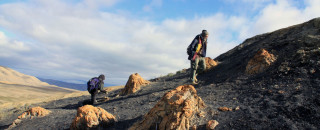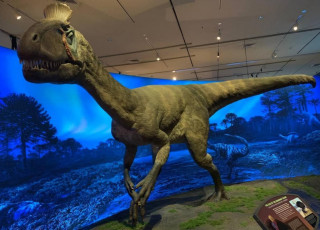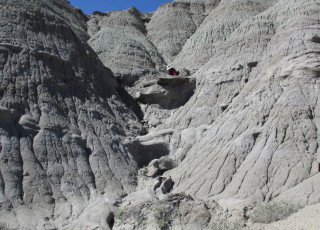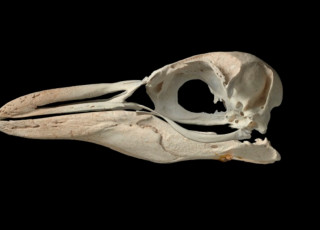Polar Dinofest: Jaelyn Eberle
By Riley Black
Dinosaurs weren't the only strange creatures to roam the prehistoric Arctic. Around 53 million years ago, long after the mass extinction that marked the end of the Cretaceous, environments within the Arctic Circle hosted a greenhouse world where ancient alligators lived in the swamps and tapirs tromped through the forest. This is the world that University of Colorado Boulder paleontologist Jaelyn Eberle has diligently worked to uncover.
Eberle's expertise is in fossil mammals and much of her fieldwork has been on Ellesemere Island in the Canadian Arctic, following paleo pioneers like Mary Dawson. The rocks preserved here record a time period called the Eocene, one of the early chapters of the Age of Mammals. That's not to say there aren't other finds to be made in the area. Fascinating fossil plants have been found in these strata, too, includinig massive tree trunks that paleontologists can still walk among. That's "pretty convincing evidence that the Arctic was once covered in forests," Eberle says.
Of the mammals found on Ellesmere, Eberle says, the most iconic is Coryphodon. This archaic mammal lived and acted much like modern day hippos despite not being closely related. The fact that Coryphodon fossils have been found elsewhere around the Northern Hemisphere helped provide evidence of connections between continents and how the world was wildly different during the Eocene hothouse.
Paleontologists have uncovered a wealth of other organisms from Ellesmere. Tapirs, rodents, tiny carnivores, early primates, and superficially rhino-like animals called brontotheres have been found in these rocks, not to mention the alligators, turtles, and varied species of fossil plants. The picture, Eberle says, is like a cypress swamp but placed in the high Artctic with an entire menagerie of animals only distantly related to those alive today. This was a place that was "beautiful and forested and lush," Eberle says, a signifier of how dramatically the Earth has changed through time.
Click Here to Explore More of NHMU's Polar DinoFest
Riley Black is the author of Skeleton Keys, My Beloved Brontosaurus, Prehistoric Predators, and a science writer for the Natural History Museum of Utah, a part of the University of Utah in Salt Lake City. Our mission is to illuminate the natural world and the place of humans within it. In addition to housing outstanding exhibits for the public, NHMU is a research museum. Learn more.



